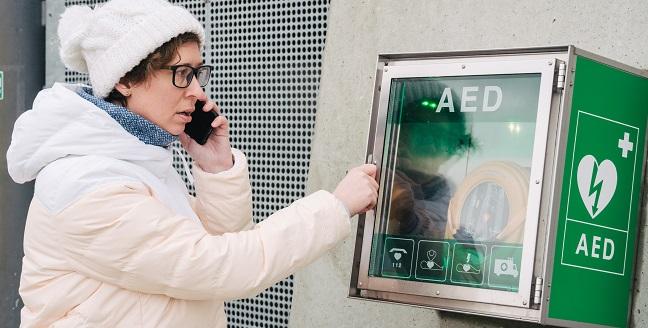Silent MI Often Precedes Sudden Cardiac Death, Finnish Data Confirm
A remaining question is whether widespread ECG screening for silent MI might yield clinical benefit.

Silent myocardial infarction is common among individuals who go on to experience sudden cardiac death (SCD), a Finnish autopsy study confirms. Two-thirds of these patients had abnormal results on ECG prior to their deaths.
Senior author M. Juhani Junttila, MD (Oulu University Hospital and University of Oulu, Finland), told TCTMD that the case-control study is hardly the first of its kind. However, most prior reports date back to the 1970s and 1980s. “So I think it was a good time to revisit [the topic of silent MI in SCD] and we had a really large population,” he said. “What we were surprised at was that so many had an MI scar on the autopsy even though they didn’t have any diagnosis of coronary disease prior to death. In effect, they didn’t have symptoms to drive [them] to the hospital to be diagnosed when they had the MI.”
Elsayed Soliman, MD (Wake Forest School of Medicine, Winston-Salem, NC), who was not involved in the study, said the new data adds yet more evidence that silent MI is common and is associated with poor outcomes. “Since the most common cause of SCD is coronary heart disease, and since silent MI is an MI, it is not surprising to see a high prevalence of silent MI in SCD,” he told TCTMD via email.
The question, then, is whether widespread ECG screening for silent MI might yield clinical benefit.
Silent MI and recognized MI are two inherently different pathological entities with different risk factors and subsequently require different preventive measures. Elsayed Soliman
For some, including Junttila, the answer is yes, at least in some individuals. “Nowadays, we’re really efficient and patients are really informed, so they already know the risk factors for cardiovascular diseases. The progress has been really great in the last 30 years in this area. But it seems that it’s not reaching every patient. There’s this at-risk population who end up dying suddenly who had an MI even though they didn’t know they had [coronary] disease.”
Awareness of the potential for SCD might encourage patients, even in the absence of symptoms, to adhere to secondary prevention drugs, he added. Screening would be targeted at individuals with cardiovascular risk factors such as smoking, high blood pressure, high cholesterol, and the like. “An EKG is cheap, and it’s widely available pretty much everywhere,” Junttila said, adding that patients could then, as needed, be referred to echocardiography and ultimately cardiac MRI.
For Soliman, however, there’s not enough proof yet in support of screening’s cost-effectiveness and feasibility.
“Let us not forget that silent MI is an MI. Therefore, a healthy lifestyle and management of cardiovascular risk factors such as high blood pressure and diabetes would likely prevent most silent MI as it prevents recognized MI, and subsequently, their complications,” Soliman urged.
Nearly 6,000 Patients
For their case-control study, which was published online July 10, 2019, in JAMA Cardiology, Junttila, along with lead author Juha H. Vähätalo, BM (Oulu University Hospital and University of Oulu), and colleagues, looked at autopsy data for 5,869 individuals (79% men; mean age 65 years) in the Finnish Genetic Study of Arrhythmic Events who had experienced SCD between 1998 and 2017. Those with CAD and evidence of silent MI—defined as a scar detected by macroscopic and microscopic evaluation of myocardium without previously diagnosed CAD—served as cases, whereas those with CAD but not silent MI were considered controls.
SCD was attributed to CAD in 4,392 (74.8%) of patients, of whom 3,122 (71.1%) had no prior CAD diagnosis. Silent MI in particular was detected in 42.4% of patients who experienced SCD but lacked a CAD history.
There were multiple significant differences between individuals in the silent MI group and those who lacked evidence of scarring: they tended to be older (mean 66.9 vs 65.5 years), had a higher heart weight (mean 483 vs 438 g), were more likely to be men (83.4% vs 75.5%), and were more likely to have died during physical activity (18.2% vs 12.4%) or outdoors (20.0% vs 14.9%). Conversely, and “surprisingly,” according to the authors, deaths in saunas were less common for the silent MI versus no-silent MI group (1.6% vs 4.3%). No disparities were seen in terms of diabetes history, hypertension, dyslipidemia, angina symptoms, or exercise dyspnea.
An EKG is cheap, and it’s widely available pretty much everywhere. Juhani Junttila
ECG results were available for 438 patients. Blinded investigators identified abnormal findings in 66.8% of the silent MI group and 55.4% of the no-silent MI group (P = 0.02).
One thing to keep in mind when interpreting the data, Soliman said, is that the method of identifying silent MI can influence its observed prevalence. “Developing standard methods for defining silent MI is really needed and is one of the main gaps in knowledge. This includes investigating whether ECG, imaging, or a combination of both is a better approach for detection of silent MI, and standardizing the criteria for such an approach,” he advised, adding that more also needs to be known about how the size of the silent MI might affect risk of SCD.
“Silent MI and recognized MI are two inherently different pathological entities with different risk factors and subsequently require different preventive measures, and hence, looking for unique risk factors that lead to silent MI is needed,” Soliman concluded.
Caitlin E. Cox is News Editor of TCTMD and Associate Director, Editorial Content at the Cardiovascular Research Foundation. She produces the…
Read Full BioSources
Vähätalo JH, Huikuri HV, Holmström LTA, et al. Association of silent myocardial infarction and sudden cardiac death. JAMA Cardiol. 2019;Epub ahead of print.
Disclosures
- Junttila reports receiving grants from Abbott Medical Finland and personal fees from AstraZeneca, Boehringer Ingelheim, Merck Sharp & Dohme, and Pfizer outside the submitted work.
- Vähätalo and Soliman report no relevant conflicts of interest.


Comments